GUEST EDITOR
LANE DIKO

Cultural Fluidity
Cultures are sometimes perceived as having clear edges and centers. Seen from a distance, foreign cultures can appear as distinctly-defined entities with singular personalities and characteristics. However, exploration into any particular cultural trope—whether 7th century garden design, 1870s Impressionism, or 1970s punk rock—reveals the true nature of culture to be that of movement, change, and flow. On closer inspection, those seeming edges and centers seen from a distance cannot be found.
The tendency to personify and essentialize cultures is especially common when it comes to Japan, famous for its relative geographical and historical isolation. If, however, one island-hops along the Ryukyu Arc for example, from Kyushu to Taiwan, the cultures of each island can be seen to subtly but clearly differ from the next. At a certain point one needs to present a passport. This legal border, signifying the end of one space and the beginning of another, is no barrier in terms of cultural flows.
Cultures flow on a continuum in every direction and in time. Imagine a dynamic weather map, in constant motion, overlayed on a static map of political divisions. Like the weather, the dynamic trends and patterns of culture exist and move on a scale beyond human comprehension. Our language on this topic likewise cannot encompass its subtleties or scope. Out of necessity—in conversation and in this magazine—we use terms like “Kyoto” or “Japanese culture” as crude signifiers which may be intended to mean—and be interpreted as—countless things in interplay.
Cultural flows can be chaotic and cacophonous, and at other times gradual and subtle. Geographic images come to mind: whirlpools, rivers, underwater currents, and tidal estuaries of culture. In the unprecedented maelstrom of our globally networked age, conventional boundaries—cultural, historical, geographic, and linguistic—seem to be disintegrating. Simplistic concepts of imported and exported culture no longer apply. People are viewing themselves—their very identities—more and more as part of a spectrum: racially, nationally, sexually, and culturally.
In KJ 106: Cultural Fluidity we explore many ways in which culture has flowed in and out of Kyoto: how foreign cultures have manifested in new ways in Japan; how aspects of Japanese culture have been reimagined overseas, and further, how those manifestations of Japanese culture have returned to influence Japan. Fluidity can be observed in the complexity of diasporic and immigrant experiences around the world. It is inherent to the interpretation and reinterpretation of jazz and punk music. It is essential to the nature of shapeshifting international figures like Ryuichi Sakamoto, Phoebe Bridgers, and David Bowie. From Japonisme to Emoji, Cultural Fluidity includes Pokémon, cosmopolitan ikebana, modern Noh theater (and even the wandering ghost of Elvis Presley!)
KJ 108, coming in summer 2024, will further develop the wide-ranging theme of cultural fluidity, delving into topics including mythology, food, architecture, and tea culture. We hope that the poetry, personal essays, interviews, photography, and illustrations featured in these issues will invite you, as a reader, to recognize and appreciate the depth and fascinating complexity of these blending edges of cultures, in the world and in yourself.
—Lane Diko

“What is your oldest memory of something Japanese? What cultural product, news story, food, or schoolbook can you recall encountering as a child?”
To expand on the theme of cultural flow, we asked this question of all KJ 106 contributors and staff. Their answers, a small sampling of experiences, are microcosms of how Japanese culture has diffused around the globe and how this flow has changed over the last century. In many cases, those things remembered were only later discovered to be Japanese. Ranging from WW2 to Nintendo, these childhood experiences offer a unique portrait of Japan’s place in the world. We see Japan’s transition from an object of fear to a supplier of cheap goods and beautiful, delicate products to a source of high-end food and gaming technology.
Bob Brady
I was born in 1940, devoid of culture or politics, in Albany, New York. As the result of something in a place called ‘Hawaii’ (whatever that was) by ‘Japan’ (also wtw), my father was stationed in the ‘bulge’ of somewhere. I remember my mother packaging stuff to send him that I begrudged, like cookies and jam. Soon I was challenging the long sidewalks of Second Avenue with my tiny tin airplane, chanting the headlines “Bombs over Tokyo” (wtw).
Elisabeth Murawski
My earliest memories are fearful. I was a little girl in Chicago when America entered the war. My eldest brother was a soldier, fighting against Japan. I remember newsreels of the atomic bombs. Later, my other brother, who visited Japan while on leave from the Korean war, sent me a beautiful Japanese doll in a red kimono. I still have it.
Marc Keane
My father was stationed in Japan for six months immediately after the surrender. When he returned to New York, he brought back a boxed set of traditional Japanese fairy tales that had been published in the Meiji period in English by one Hasegawa Takejiro of Tokyo. The books were printed on a fabric-like crepe paper. The touch and feel of the books, the way the binding was sewn not glued, the incredible woodblock-print graphics, and the little case that closed with ivory tongs all left a deep impression on me—another way to see the world.
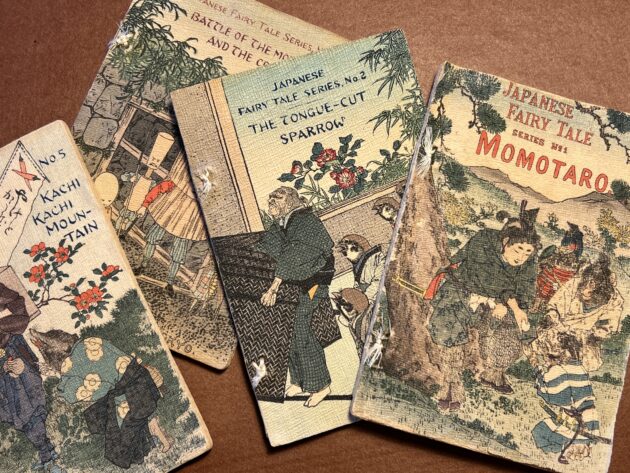
John Brandi
I was born and raised in southern California. In the early 50’s, at age eleven, I had a pen pal from Nara who wrote me on tissue-thin paper. Good English mixed with Japanese. Envelopes with cherry-blossom stamps. Postcards of a huge bronze Buddha, the deer park, a Shinto shrine. One New Year’s I received a gift of wooden clogs, lacquered chopsticks, and a painted fan. I was immediately hooked.
John Einarsen
In the early 1950’s, I collected stamps with Carl, who lived next to my grandmother’s house in South Dakota. I spent summers there when I was a kid. We ordered bags of random stamps from ads in the back of comic books. I remember the ones from Japan being the most beautiful and coveted. Seemed like they were from a different planet.
Joshua Breakstone
The various Japanese restaurants I went to as a kid in New York are a blur. I was eating sushi, sashimi, and other Japanese foods throughout my childhood in the 50’s and 60’s. It was no big deal. Japanese restaurants were everywhere, and Japanese food was just a normal part of life.
Lois P. Jones
If someone could be a perfect child, it was Susan Watanabe. We went to elementary school together in Chicago. She was as beautiful as she was intelligent and was always the first to answer in our class. Her hair was long, straight, and glossy (impossible in those days before blow dryers and flat irons). Her eyes held a kind of confidence which seemed very adult.
Gregory Dunn
When I was 5 years old, I remember seeing a Japanese army rifle in the closet of my father’s bedroom. He showed it to me with care. He pointed out the embossed chrysanthemum above the trigger. A bayonet also attached to the barrel. My father had been in the war of course, and found the rifle lying on a beach somewhere in the Pacific. He never told me more than that. This was in 1962 in Chicago.
Masao Sugiyama
In the early 1960s, in a rural area of Saitama surrounded by endless rice paddies, there was no sign of anything foreign. TV was not yet available in many households, so the only place I encountered something different was in the books at the school library. I used to read them while walking home. I was drawn into the world of the Arabian Nights, and I often dreamed of bandits, jinn, or flying carpets. My first contact with foreign culture was not European but Islamic.
Ken Rodgers
On a windswept Tasmanian Southern Ocean beach, I discovered a woven-straw zori sandal with black velvet straps, and mysterious bamboo tags inscribed with kanji, originating from far-ranging Japanese tuna fishing boats. In 1963, when I was in 6th grade, one of them made an emergency port call; the Hobart Mercury newspaper photographer snapped me with one of the crew.
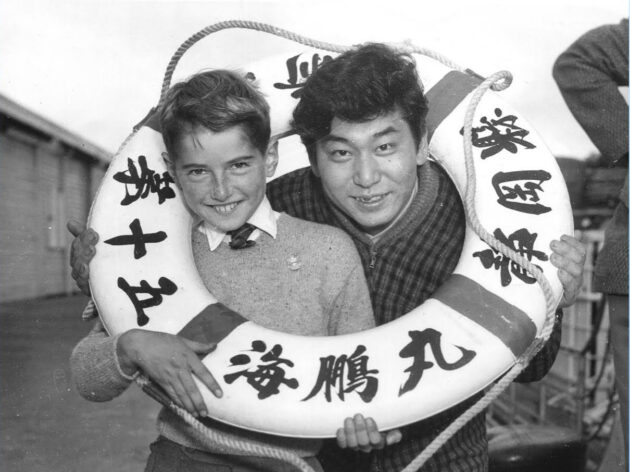
Shelley Baker-Gard
I was about ten years old in the mid-60s when my piano teacher took me to a Japanese restaurant in Portland, Oregon. I was fascinated by the waitress in kimono. We removed our shoes and, to my amazement, were seated on floor pillows around a sunken table for our feet to dangle under. It was then that I fell in love with the dried seaweed that I quickly learned to roll my rice in. Now I am the old teacher, and I often remember this dinner when I see my grandson eating seaweed snacks.

Lauren Deutsch
In the 1960s, there was a deluge of inexpensive stuff MADE IN JAPAN. I also somehow learned about origami when I was in junior high school in Philadelphia. Must have been through a library book.
David Cozy
When I was in first grade in Los Angeles, California, 1966, my best friend was Francis Mori. His parents ran a small Japanese restaurant and were kind enough to invite me to a sushi dinner there. I especially remember the squid and octopus. They tasted great, and what could be cooler for a six-year-old boy than eating tentacles?
Mike Freiling
I suppose I was exposed through haiku in high school, but the most important connection was my college friendship with two Hawaiian students of Japanese ancestry—John Nishimoto and Paul Nishijima. Together we would read the novels of Mishima and Kawabata and take in as many Japanese movies as we could find in the art house cinemas of late 60s San Francisco—samurai movies as well as Woman in the Dunes and Tokyo Story. We are still in touch all these years later.
Susan Pavloska
There is a photo from the early 1970s of me standing in the paneled rec room of my parents’ house in New Jersey wearing an embroidered satin Chinese robe. This I had accessorized with a blue plastic hairband around my skinny ribcage, ballet slippers, a conical metal lampshade, and a paper fan. I don’t know exactly what inspired me, but I somehow already had an image of ‘Japan’ in my mind, perhaps connected with my father’s stories about the Japanese prisoners of war he had known in Guam during the final months of WWII.
Suzanne Kamata
A girl in my elementary school class in Michigan, back in the 1970s, had lived in Japan with her parents. My first memory of Japan is a photo of that American classmate in a kimono.
John Wells
When I was an elementary school student in the late 1970s in Ohio, a woman from Japan visited our class. She wrote each of our names in Japanese in hiragana on pieces of paper and gave them to us.
Rick Elizaga
When I was a boy in the mid-1970’s, living in Washington State, my dad brought me home an unfamiliar toy, a two-foot tall “Shogun Warrior Mazinga.” He had a flared crown, grilled mouth, broad chest, glowing yellow eyes, and was armed with swords and rockets. I didn’t know if this robot samurai was friend or foe, but he was clearly fierce and formidable.

John Oglevee
In the late 70s, I befriended Hideo Kusaba in my 3rd grade class. His family had moved to NY for his father’s work. He became one of my very best friends, and I spent a lot of time at his apartment marveling at his robotic toys. I’ll never forget his birthday party when his mother presented yakitori skewers. The taste of that sweet and savory glaze was a revelation!
Fiona Bennett
In 1978, when I was about 12 years old, my father went to Japan for work. I distinctly remember a postcard that he sent back to us in London. It was a picture of a temple rooftop with intricate tiles, a chrysanthemum in the corner, and a golden carp superimposed over half the image.
Subhadassi
The first encounter I am aware of was the television series Saiyūki (Account of the Journey to the West) made by Nippon TV and known in English as Monkey Magic. It was broadcast by the BBC beginning in November 1979. There were only three TV channels in the UK at that time and few programmes for children, so as an inquisitive 12-year-old, I was enthralled by this quirky and at times bizarre foreign folktale melodramatically overdubbed in English. I later discovered that Saiyūki is based on an ancient Chinese legend which traces the origins of Buddhism.
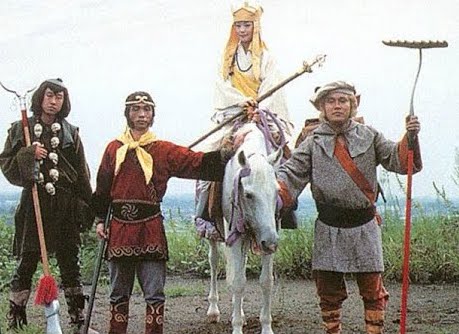
Alex Mankiewicz
Like many, it was probably 1970s cartoons—Go Speed Racer GO! More particularly, however, I have a memory of a threadbare wind-up donkey of my mother’s. I was drawn to the melancholy aesthetic. It seemed to be one of the few things she had from her childhood, yet something about it didn’t feel English. After she died, a Google search for ‘vintage wind-up donkey’ brought up the exact one—from 1940s Japan. It’s now in my studio.
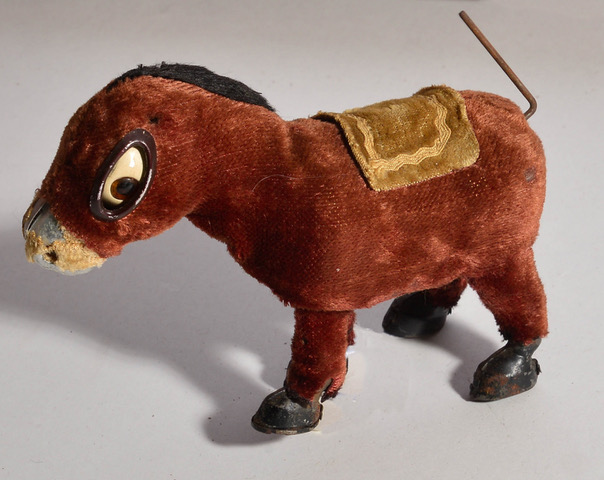
Magda Rittenhouse
In the mid-1980s, as a teenager in my native Poland, I came across a bilingual anthology of haiku by Basho, Busan, and Issa. I had no idea what haiku was, let alone that it was Japanese. But the volume had a bright yellow cover and was printed on thin, textured paper. It was so beautiful and so different from the poorly produced books we were accustomed to during grim years of communism.
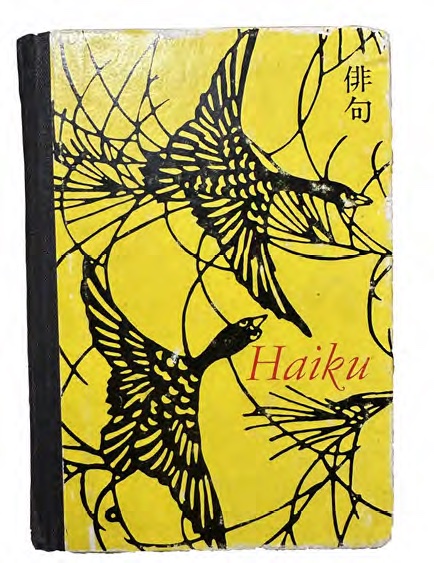
Jennifer Teeter
Growing up in a suburb of Chicago in the 80s, I remember seeing the adorable collection of Hello Kitty-themed stationery and thermoses that adorned the desks of my classmates of Korean and Filipino heritage. With each passing holiday, I would notice new Hello Kitty accessories making their way into my friends’ pen cases.
Lane Diko
I remember learning words like ‘katana’ and ‘ninja’ from my older cousin at an early age, fascinating ideas for a young boy. I grew up in the Midwest in the 1980s, but my mother would prepare Japanese macrobiotic dishes of brown rice and vegetables in a unique cast-iron pot with a wooden lid that she brought back from her years in 1970’s San Francisco. (I would learn years later that this exact nabe pot was ubiquitous in Japan.)
Rebecca Flato
For me, Japan first came into view while watching the 1980’s John Hughs film The Breakfast Club. The movie’s star, Molly Ringwald, plays a wealthy student who brings sushi for lunch, to the confusion of her less affluent classmates. She pulls out chopsticks and a black lacquered box to eat “rice, raw fish and seaweed.” I was probably 9 or 10 and in South Texas, and this scene left me captivated, wanting to know more.
MK
In 1980s communist Czechoslovakia, cut off from the world, I got really interested martial arts through Shaolin kung-fu movies, and my first taste of Japanese culture came from karate classes when I was 9-10 years old, where I learned moves, manners, and basic language like Hajime (start) and yame (stop). My first Japanese words were counting to ten: “Ichi, ni, san, shi…”
Mahon Murphy
Reruns of a French/Japanese Procidis/Tatsunoko animated series Il était une fois…l’homme (Once Upon a Time… Man), played on Irish television in the 1980s. It taught kids about world history, and I remember quite a clear feeling of being fascinated by it, even though my memory of the actual content is vague.
Ran Zwigenberg
I remember watching Japanese cartoons on Israeli state TV in the mid-eighties. Space Battleship Yamato and 3000 Leagues in Search of Mother, titled Ha’lev (The Heart in Hebrew), were iconic in Israel but little known in the English-speaking world. They were the first animated series I was really into as a kid.
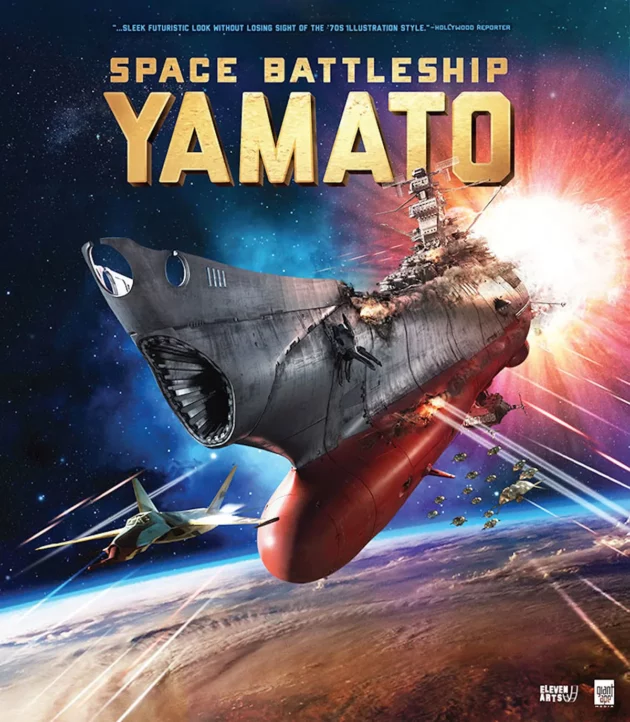
Nathan Mader
Growing up in Saskatchewan on the Canadian prairies in the 1980s meant my contact with foreign culture was pretty limited, but I remember being spellbound by Mr. Miyagi in The Karate Kid, as well the sequel, when they go to Okinawa—though I later learned many scenes were shot in Hawaii. I also had a pen pal from Japan in fourth grade and can still see the translucent blue rice paper and green ink.
Anna Mehta
When I was in primary school in Australia in the early 90s, a Japanese lady visited our class to do a talk on Japan and Japanese language. I can remember her telling us about borrowed words like ‘kamera’. I was captivated by all she had to say. I signed up for Japanese classes, and the rest is history!
Hirisha Mehta
In the early 90s, when I was 7 or 8, my mum took my sister and me to a Japanese cultural event in my hometown of Poona, India. I remember a Japanese lady in kimono writing my name in katakana with ink and brush. I was amazed to see this strange script and to know that it read as my name. I am now a graphic and type designer and love designing fonts and kanji.
Robert Dahlberg-Sears
I grew up in the Midwest in the 90s. At around four or five years old I began saving my meager allowance for a Super Nintendo. One Christmas morning though, my parents surprised my brother and I with one; whether I knew Mario, Luigi, or Yoshi were actually Japanese, who can say?
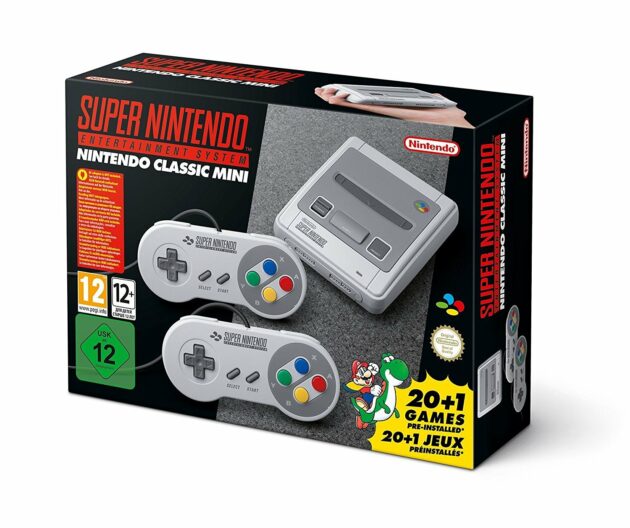
Martha Knauf
Sometime in elementary school, we all read Sadako and the Thousand Paper Cranes. I didn’t fully understand what it was about or that it was based on a true story, but it affected me profoundly. This was in Vermont in the mid-1990s, and I had no idea that I would someday visit Hiroshima and stand in front of the statue of Sadako.
Pete Glover
In England in the mid-90s, there were various Japanese brands with adverts on TV, like Toshiba, JVC and Toyota (“The car in front is a Toyota”). I remember JVC sponsored Arsenal FC, who I despise, and when my dad bought a second-hand JVC stereo amp, I was suspicious.
Luan Banzai
Growing up in Brazil, for me there were always Brazilian-Japanese people around. I remember when I was 7 or 8, in maybe 1995, my mom made me try something called sushi. The word didn’t mean anything to me. For me it was just raw fish, and when I tried it, I vomited right away. (It’s now one of my favorite foods.)
Lewis Miesen
I loved the kids TV show Power Rangers when I was a kid in Texas in the ’90s. Made up of different races, genders, and backgrounds, the team must unite into one mega-robot to defeat the evil monster. Looking back, the emphasis on teamwork and collective effort stands in contrast to American superheroes who single-handedly save the world.
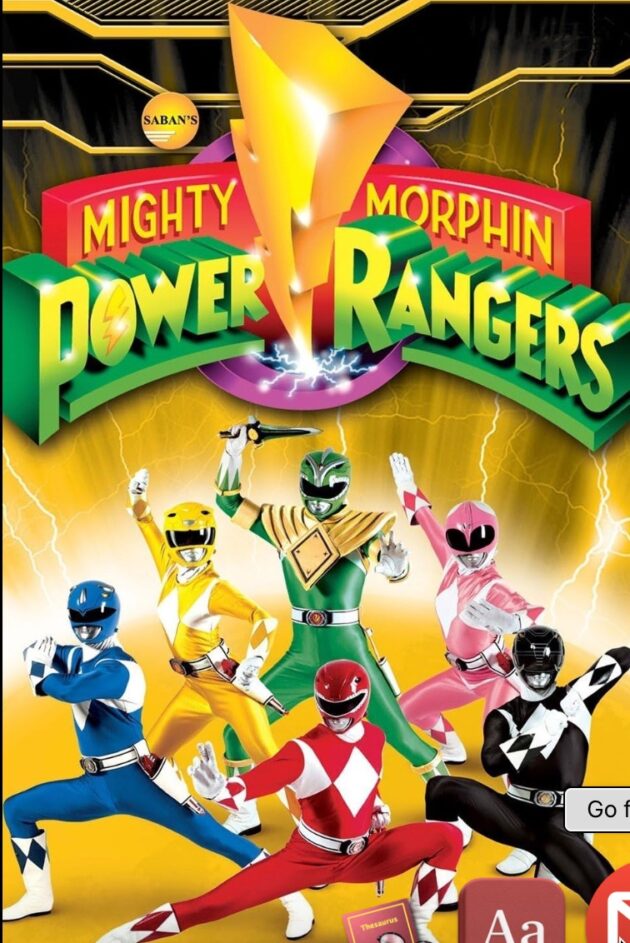
Codi Hauka
When I was around 10 years old in 2000, my parents started hosting homestay students, and one of the first to stay with us was a girl named Kazuyo. I distinctly remember all the omiyage gifts she brought with her: small boxes of vivid, jewel-like candy, glossy kamifūsen paper balloons, and floral-patterned tenugui cloths. Kazuyo ended up living with us in Vancouver for 2 years and is still like a sister to me.
Garrett Speller
I remember huddling next to the heating vent in my room on a cold Christmas morning—the double pulse startup sound of the Nintendo DS, the soft click of the buttons, and a rush of excitement as I navigated through Pokémon’s Twinleaf Town. When given the chance to choose a Pokémon, I picked Piplup and named him ‘Bubbles’. This was the early 2000’s in a suburb of Buffalo, New York, and I think I was around 7 years old.
Henry Lan
Doraemon was a big part of my early childhood in Guangzhou, China in the early 2000s. The series imprinted a sense of familiarity and community with Japan. Features of Japanese scenery, like the sand-grit playgrounds and riverside recreation areas, made my first visit to Japan feel like stepping into a warmly recognisable world.
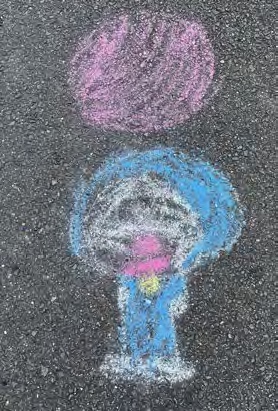
Théodora Poulot
Nintendo games like Mario Bros and Pokémon were my first unknowing taste of Japanese culture. I remember getting my first DS game in 2009 at age six and the excitement of playing it with my siblings in our home in Paris. Back then, I didn’t think about where these games came from; it was all about the simple joy of gaming.



